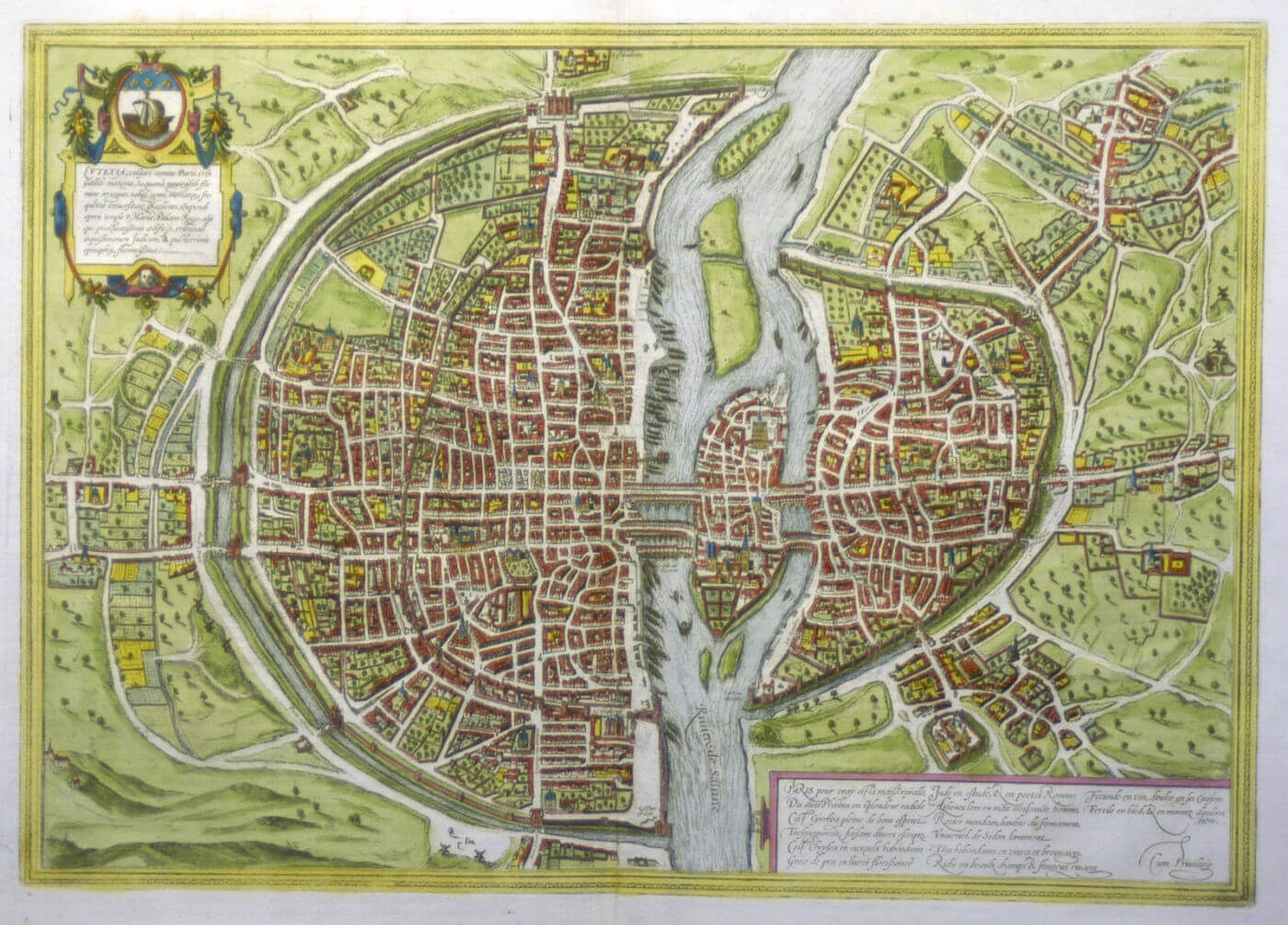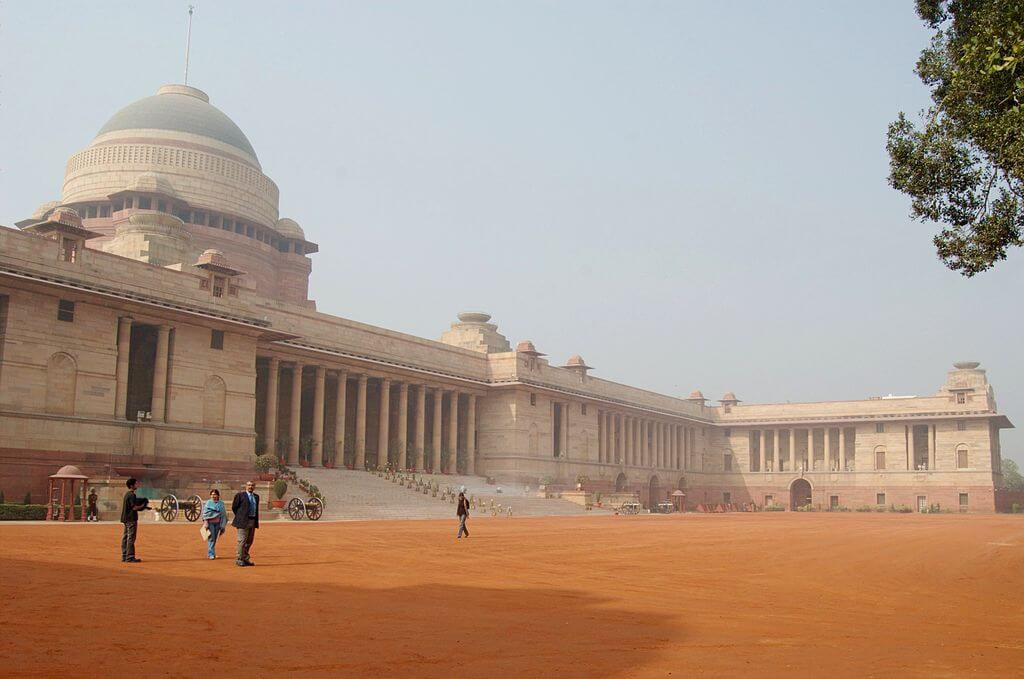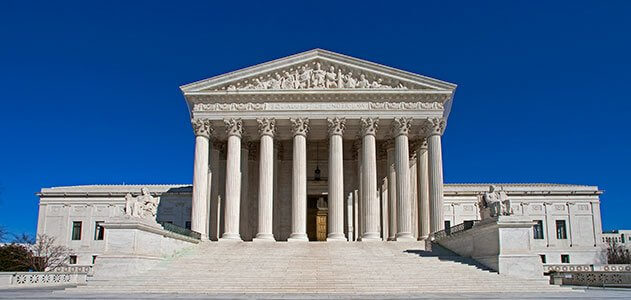Ricochet is the best place on the internet to discuss the issues of the day, either through commenting on posts or writing your own for our active and dynamic community in a fully moderated environment. In addition, the Ricochet Audio Network offers over 50 original podcasts with new episodes released every day.
 Roman Through Paris
Roman Through Paris

Lutetia, Vulgari Nomine Paris, Urbs Galliae Maxima
To lift your mood on the Ides of April, I hereby invite you to the Inaugural Ricochet Pariscope walk with me tomorrow at 7:00 pm local time. That’s 1:00 pm in Charleston, noon in Dallas, and 10:00 am in Oregon.
I’m not going to plan the route overmuch, because the whole point is that you can see something interesting and say, “Hey, what’s that thing, down there on the right?” But my general plan is to begin at the beginning of time.
Lutetia was the largest Roman city in Europe. It was founded on the island in the middle of the city, and it expanded to the Left Bank of the Seine: The neighborhood is still called the Latin Quarter. We’ll start our walk there, so the first thing you’ll see is large groups of Chinese tourists, souvenir shops, and the French military, looking stressed and trying to make sure nothing bad happens to the tourists.
Keep an eye out for the Roman architecture. In the strictest sense, you can’t see it: When the Roman Empire collapsed in the fifth century, so did Lutetia, and by the beginning of the Middle Ages almost everything they’d built was gone. But we know what used to be there. In the mid-19th century, Baron Haussmann renovated Paris. Had he not done so, Lutetia would still be hermetically preserved below the city’s medieval layer, and we’d know almost nothing about it.
Before we go, have a look at these wonderful watercolors by the French archaeologist Jean-Claude Golvin. That’s the best I can do to show you ancient Lutetia for now, since we don’t yet have a time-travel streaming-video app. (But stay tuned: If Dan Hanson’s right about the progress we’ve made in VR, I should be able to do that pretty soon.)
It’s tempting to think that the mistakes made by Paris’s postwar architects were owed, among other things, to their obscene arrogance and their contempt for history. But Haussmann, too, was obviously nothing if not arrogant and indifferent to history: He took a glance at the ancient Roman forum, the aqueducts, the public theater, the basilica — all of which had been buried for more than a thousand years — and buried it again, this time for good. “Unbelievable as it may be,” writes Thirza Vallois, “most of the original Roman amphitheater that was unearthed in 1867-68, during Haussmann’s renovation, was demolished in 1870 to make room for a city bus depot.”
But Paris was even more beautiful after Haussmann’s renovation than it had been before. Why? Because the Romans seem to have discovered architectural principles upon which you can’t improve, save to add decoration or embellishment. Even though Haussmann and his contemporaries were indifferent to the physical relics of antiquity, they ascribed entirely to these principles.
How do you recognize a Roman building? It looks pretty much like a Greek or an Etruscan building, but with some important innovations. The Romans used new materials, by the standards of the time. They were the first to use concrete. (Ricochet has an in-house concrete expert, to whom I direct all further questions about this: He knows way more about this than the rest of us ever will.)
Alright, but apart from the concrete, what have the Romans ever done for us?
They figured out how to go beyond trabeated systems for holding up roofs. If you see arches and domes, it means “Romans was here.”

Sir Edwin Landseer Lutyens, known as the greatest architect in British history, built this section of New Delhi. Notice the architectural language he built it in.
Okay, but besides the arches and domes, what have the Romans ever done for us?
They appreciated that even though they were able to build without columns, that didn’t mean they should. They had the insight to see that architecture is a language. You can’t suddenly start building things without the columns and expect people to understand what they mean.

When Americans are serious, we speak Roman, too.
Columns, domes, and arches mean, “built by a major-league empire that means to be here forever.” It’s an architectural language everyone in the world understands, because sooner or later, everyone was either colonized by the Romans or colonized in turn by the people they colonized. (Do the words “column” and “colonize” come from the same root, I wonder? Anyone know?)
Alright, but besides the concrete, the columns, the domes, the arches, and inventing the architectural style that everywhere in the world, to this day, means “We’re an empire and we’re here to stay,” what else have the Romans done for us?
Well, they were the first to build cities in neatly-organized grids, with many public spaces, in a systematic, organized way. Haussmann approached the problem of urban planning much as a Roman would.

The Jussieu university campus is in the Latin Quarter, but there’s nothing Roman about it. It’s criminally ugly.
The Parisian Renaissance was inspired by the Italian Renaissance, which was inspired — of course — by the Romans. So what Haussmann proved is that it is possible to tear down large parts of an ancient city down and rebuild it to make it more practical — or more hygienic, in this case — without destroying the city aesthetically. So long as you strictly follow Roman rules.

If you’re in doubt about the rules of architecture, Vitruvius will set you straight.
French art historians sometimes sneer at the French Renaissance as “derivative,” in that the French were mimicking the Italians rather than creating something new. The period of which they’re most proud is French classical, which they view as original. But it isn’t. It’s still based on the traditional columns and proportions of Roman architecture. (And on Italian renaissance decoration: You can add a lot of decoration to a Roman building without doing it any harm.)
In other words, Paris is Roman all the way down, and to the extent any building deviates from its Roman heritage, it’s always ugly. You’ll see what I mean tomorrow.
Any questions before we go? And hey, does anyone know how to put columns and a dome on this widget?
Published in General




Claire,
You mentioned many times that the ruins of the old Roman city are under everything. Has anyone done a virtual 3D treatment of what the Roman city of Paris must have looked like.
This is a 3D simulation of what the Temple Mount in Jerusalem looked like in the 1st century C.E. before its destruction. Rome was at its zenith at this moment.
Regards,
Jim
Works fine for me on Firefox. Getting the URL ported over to my phone’s email facility is a bit cumbersome, but as someone has already said, Periscope is about mobile, not the static Internet. (Still, that seems like an obvious upgrade for a nearby version.)
Eric Hines
Claire,
I read the piece on your Grandfather. This just jumped out at me.
I am not making the case that self-defense is the solution to all problems. However, it sounds like your Grandfather had a very positive attitude to life. Sometimes it is the ability to feel that one has taken some direct action, however small, to fight a great injustice that allows us to live in our own skin more easily.
Only late in life did my own father reveal to me that in the 1930s he had wanted to join the Abraham Lincoln Brigade. His father found out and took steps to ensure it wasn’t going to happen. I don’t think he was as happy a camper as he might have been because of it.
Anyway, I listened to your Grandfather’s organ music. This one jumped out. It’s very intense. I wouldn’t call it beautiful but rather sublime.
Remember the opposite of sublime is monstrous (the opposite of beauty is ugly). Maybe the post-WWII architects were trying for the sublime but without regard to morality. The result is that the big black monolith building is just monstrous.
I just saw a terrific article on Mary Shelly. For the first time, I’ve read something about her that I can agree with. Her novel Frankenstein is very underrated. Once we are ready to consider a moral argument we can see Mary’s point. The monster isn’t monstrous (he certainly isn’t beautiful) he is sublime. In Mary’s actual novel he is trying to make sense of a world that makes no sense. It is Victor Frankenstein’s ego that is monstrous. He ignores the moral completely and like in the Tower of Babel story wishes to challenge and surpass Gd. Instead, he creates horror and misery. (Sort of like Obama with the ACA.) The sin is so great that there can be no simple redemption. His own monstrous ego destroys him. The monster in the story is to be pitied.
Regards,
Jim
Now I can access periscope but looks like your videos have disappeared.
I think they are only accessible for 24 hrs
I loved the tour – watched on my computer via Chrome – audio was good too – to experience a live Paris Eve. complete with street musicians, a mass (so beautiful) at Notre Dame, see the buildings, gardens, cafes, the traffic, all of it was so interesting – I am bummed that Periscope does not save the broadcast – so it’s live and that’s it?
Thoughts:
PS – Sat. night we were watching Me and My Gal, the old movie with Judy Garland, Gene Kelly, George Burns – WWI breaks out and they go to Paris to entertain the troops – at one point, the exact scene of the potential cover of your new book showed on the screen – I hollered Hey! Did you see that scene (with the gargoyle) ?? That might be the cover of Claire’s new book!! Apparently, a famous shot?
It lets me save it to my phone, so in principle I could upload it to YouTube. But I don’t know whether it saves people’s reactions and comments — without those, it would just be a very shaky video of Paris and me talking. I’ll see what happens when I try to upload it and report.
iPhones are so ubiquitous that I don’t think it would occur to anyone to say, “Respect people’s privacy and don’t film here.” That’s the weird thing about this spy device everyone now carries on his or her person — it’s changed everything we thought we knew about privacy. I deliberately didn’t point the camera at people who were praying, but no one would have thought it strange if I had. It’s just a phone. And everyone takes pictures there.
Yeah. I have to figure out how to solve that: I’m thinking a headset- microphone might be better, though that way you’d miss ambient noises like the church bells. I had no idea the wind was that noisy — I could feel it, but I didn’t register it as “noisy.”
Sure. The app was actually developed by someone who was at the Gezi protests in Istanbul. A tool like this would have been incredibly useful for documenting what was really happening there. But obviously, viewers would get worried if (as often happened during that time) I had to put the phone away and run. It’s way better than something that looks like a video camera, though — for the reasons above. People don’t realize you’re broadcasting live, they just think you’re a weirdo who’s screaming into her phone and holding it in a weird way.
I don’t think they did. Or at least, if they did, it’s not obvious from what they built.
I’ll see if I can upload it to YouTube — though there’s something nice about the liveness of a live broadcast, and I want people to watch these live, so that there’s interaction: If people don’t comment, I don’t know that I’m showing them what they want to see, or answering the questions they might have. So maybe I should sort-of train people to think, “You only get one chance to see it?”
No big worries about walking into traffic — it looks in the video as if objects are a little closer than they appear — but how did I manage to put my thumb over the camera so much? I’ve only got two thumbs, you’d think I’d be able to keep them under better control …
Thank you for the feedback! I’d love to know if other people had thoughts or suggestions about how to make this better.
That may also have been related to the venue. That cathedral is a tourist trap as well as a serious place of worship. You might get a different reaction in a non-touristy place of worship. Or in a mosque, which is almost never touristy.
I didn’t notice the water so much; I mostly had trouble with the wind, and with your voice getting softer at times. The headset mike would mitigate that a lot, but you’ve a valid point about ambient sounds, too, and the mike would mitigate them a lot, too. Wind may be a fact of life.
Maybe they also wanted a clear break from that past. Or like Haussmann, they don’t understand the importance of that past. Or like me, they don’t understand the importance of architecture in terms of actual history and so see no need to copy it, or modernize it with clear ties to that past, or tie anything of the present to any past.
Nothing wrong with a permanent record on YouTube or any other venue as well as the chance to live the history along with you. And unlike today’s archaeologists trying to see yesterday’s past, tomorrow’s archaeologists will have a living record to experience as this sort of record gains currency.
Eric Hines
Mosques are often very touristy. I’ll show you.
On another note, when you were approaching the door to enter Notre Dame, you focused on a stone figure, then panned above it – if memory serves me, and were asking who they were. (I did not attempt to download the audio app – not sure if it would work on computer or just phone) and I didn’t want to get distracted, but at that point wanted to say……was the stone figure the Apostle Peter, and the above sitting figure with the crown Jesus? I don’t know – I’m asking someone that might know. If given the choice, I’d rather have all the noise – then filter it all out because of wind – otherwise it would be like walking around with no ears.
Also, I meant I was surprised they let you in with the phone on for safety reasons – with Paris being on high alert, a phone could be used to cause destruction – that’s what I meant.
I looked it up: They’re angels:
I don’t know – I’m asking someone that might know. If given the choice, I’d rather have all the noise – then filter it all out because of wind – otherwise it would be like walking around with no ears.
Also, I meant I was surprised they let you in with the phone on for safety reasons – with Paris being on high alert, a phone could be used to cause destruction – that’s what I meant.
Thank you for the above explanation – that is beautiful – I want to read more about it and know more, as well as Paris itself. Boy! I could keep going, but I need to get some work done! A couple more thoughts
Regarding the above story on heaven and hell, we were watching 60 Minutes yesterday evening. The story was on many of the major life insurance companies and how they ignore when they have evidence of the deceased that was insured (files that say deceased), they continue to pay themselves off the policy until the policy runs out and then they cancel it, and fail to contact the beneficiary! When uncovered, they had to pay billions! Unreal!! I said to my husband, they’re going to have to widen hell – it’s going to be very crowded there….
Regarding your comments of experiencing a story makes it more meaningful (the comments like why should we care about Turkey’s events), I hate to say it but it’s true. If I read the story of Father Desbois with Journalist Laura Logan, on the fate of the Ukrainian Jews that I also saw on 60 Minutes, it would have meaning, but seeing the places, hearing the accounts from the elders, see where it took place, it is a 3D recording of history so it speaks to all my senses and I absorb more of it. The video of the story was riveting and has stayed with me since.
That’s interesting. Would have never figured. Please do show us.
if you have an external mic, you can use a wind screen.